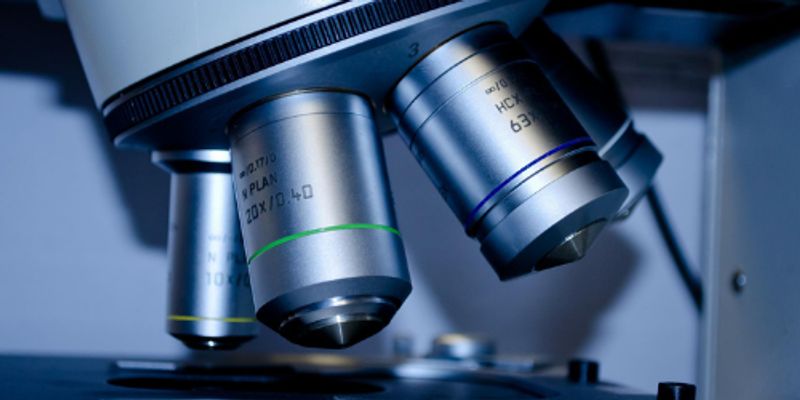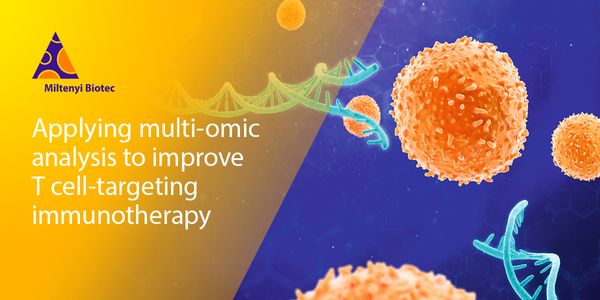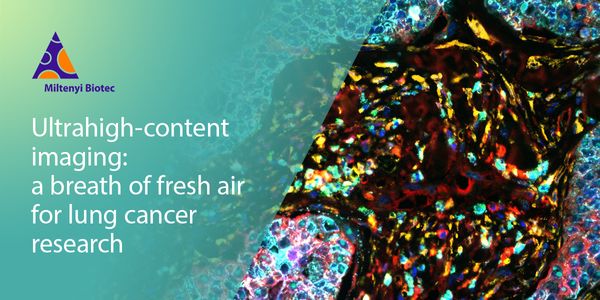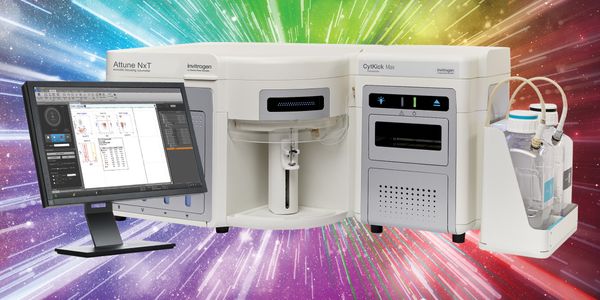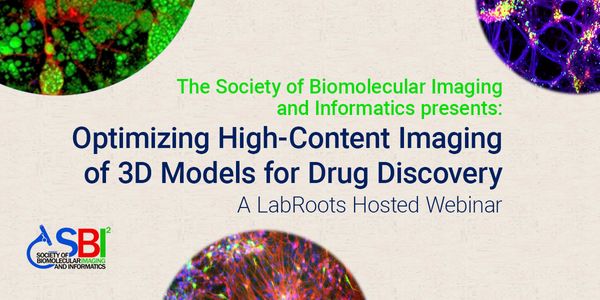Cell identifications
There are various types of cells which make up all the tissues of the body. Different cell types can be that can used to identify them while others take a specific shape or form which distinguishes them from other cell types. Emerging methods of cell identification involve data generated from single-cell RNA sequencing which can evaluate differences between various clusters of single cells.
-
SEP 07, 2021 | 12:00 AMNagy is a Professor in the Department of Plant Pathology, University of Kentucky. Dr. Nagy studies the functions of host proteins and lipids in viral RNA replication. The Nagy lab is using a...AUG 25, 2021 | 12:00 AMOver 40 tandem repeats undergo expansion events that lead to neurological disease. This number is likely an underestimate as many repeats are difficult to amplify using existing short read s...Speaker: Paul Valdmanis, PhDJUN 29, 2021 | 8:00 AMDate: June 29, 2021 Time: 08:00am PDT As the SARS-CoV-2 virus that causes COVID-19 keeps mutating, there is a growing need to sequence the viral genome from many COVID-19-positive samples to...JUN 10, 2021 | 8:10 AMMass spectrometry-based proteomics is a powerful technique for the analyses of thousands of proteins, fueling biomarker research and drug discovery. With the rich complex data from each prec...JUN 09, 2021 | 8:55 AMRecombinant adeno-associated viral (rAAV) vectors have emerged as the leading gene delivery platform for gene therapy. Leveraging LC and LC-MS methods for the characterization of AAV product...JUN 08, 2021 | 10:00 AMDate: June 8, 2021 Time: 10:00am (PDT), 1:00pm (EDT) Most deaths from ovarian and endometrial cancer are due to high-grade subtypes that metastasize before they are detectable by available...JUN 02, 2021 | 4:30 PMUnravelling the expression, distribution and interaction of tumoral markers is crucial for disease diagnostic and treatment. The past decade marks a milestone in the field of tissue analytic...Speaker: Sara Milosevic, Ph.D.JUN 02, 2021 | 3:00 PMPD-L1 is a key inhibitor of T cell activation that is often over-expressed in cancer to escape immune surveillance and promote tumor progression. Blocking antibodies against PD-L1 or its rec...Speaker: Neha YevalekarJUN 02, 2021 | 9:00 AMOver the past 25 years, Luminex’s xMAP® Technology has emerged as the worldwide leader in bead-based multiplexing. The new xMAP® INTELLIFLEX platform combines the proven perfor...Speaker: Katie Gillis , Brian E. Hall , Stephanie Brunelle, Ph.D.MAY 18, 2021 | 7:00 AMDate: May 18, 2021 Time: 7:00am PDT, 10:00am EDT Proteins encoded by mutant genes in cancers can be processed and presented on tumor cell surface by human leukocyte antigen (HLA) molecules,...APR 29, 2021 | 3:00 PM...APR 21, 2021 | 7:30 AMThe SARS-CoV-2 pandemic is challenging our health care systems and has profoundly impacted our society. Due to the poor global public health response, SARS-CoV-2 has developed many variants....Speaker: Eric Allen, MBA, M. Eng. Bioengineering , Michael Oberholzer, PhDPresented at: Genetics Week Virtual Event Series 2021
APR 21, 2021 | 6:00 AMControlling the spread of the 2019 novel coronavirus SARS-CoV-2 and ensuring a return to 'normal' activities in a post-COVID world requires two complementary efforts: 1) Widespread a...APR 14, 2021 | 12:00 AMVaccines to prevent COVID-19 were developed within 1 year after the identification of SARS-CoV-2 as the causative virus. There are now 3 vaccines that are FDA approved via Emergency Use Auth...APR 08, 2021 | 5:00 PMDATE: April 08, 2021 TIME: 08:00am PDT Multi-omics involves the use of different data modalities to study multiple “omes”, such as the genome, transcriptome, epigenome, and/or t...MAR 09, 2021 | 8:00 AMDate: March 09, 2021 Time: 8:00am (PST), 11:00am (EST) Lung cancer is one of the three most common types of cancer. Representing 85% of all lung cancers...FEB 24, 2021 | 1:30 PMG protein-coupled receptors (GPCRs) are among the most intensively studied drug targets, and account for about ~34% of all drugs approved by the FDA. Examples of drugs targeting GPCRs includ...Speaker: Annette Gilchrist, PhD , Professor Kevin Pfleger, MA, PhD, FBPhS , Juan José Fung, PhD , Aarti Kawatkar , Yamina A. Berchiche, PhD , Ajay Yekkirala, PhDPresented at: Drug Discovery & Development Virtual Event Series 2021
FEB 24, 2021 | 12:00 PMStable cell lines are critical tools of cellular assays in drug discovery and development. Over-expressing cell lines are needed to screen for hits, while functional cell lines are needed fo...Speaker: Vevian ZhangFEB 24, 2021 | 12:00 PMWith an introduction by Sarah Warren, the Senior Director of Translational Science, this webinar will open by providing a brief technology overview of NanoString Technologies. Dr. Warren wil...Speaker: Jason Frazier , Sarah Warren, PhDPresented at: Drug Discovery & Development Virtual Event Series 2021
Sponsored By: NanoString TechnologiesFEB 10, 2021 | 12:00 AMTraditional drug discovery often begins with simple biochemical and transformed cellular models, advances to more complex animal models in late discovery phases, and often does not ‘se...Speaker: Cassiano Carromeu, PhDPresented at: Laboratory Animal Sciences Virtual Event Series 2021
FEB 10, 2021 | 12:00 AMKey to the development of the HUB Organoid Technology was the discovery of LGR5+ intestinal adult stem cells by the Clevers’ lab. With the identification of these stem cells, we were a...FEB 09, 2021 | 8:00 AMDATE: February 09, 2021 TIME: 08:00am PST Flow cytometry immunophenotyping has become one of the mainstream applications for the diagnosis and classification of several hematologic neoplasms...FEB 03, 2021 | 12:30 PMIn vitro spheroid models are fast becoming the de facto standard for drug discovery applications, largely due to their human-like physiological and morphological characteristics, tissue-like...DEC 03, 2020 | 4:30 PMThis drug development program is designed to create a family of broad-spectrum, pan-coronaviral drugs that respectively inhibit multiple key enzymes required for viral replication. By target...
SEP 07, 2021 | 12:00 AM
Nagy is a Professor in the Department of Plant Pathology, University of Kentucky. Dr. Nagy studies the functions of host proteins and lipids in viral RNA replication. The Nagy lab is using a...
AUG 25, 2021 | 12:00 AM
Over 40 tandem repeats undergo expansion events that lead to neurological disease. This number is likely an underestimate as many repeats are difficult to amplify using existing short read s...
Speaker:
Paul Valdmanis, PhD
JUN 29, 2021 | 8:00 AM
Date: June 29, 2021 Time: 08:00am PDT As the SARS-CoV-2 virus that causes COVID-19 keeps mutating, there is a growing need to sequence the viral genome from many COVID-19-positive samples to...
JUN 10, 2021 | 8:10 AM
Mass spectrometry-based proteomics is a powerful technique for the analyses of thousands of proteins, fueling biomarker research and drug discovery. With the rich complex data from each prec...
JUN 09, 2021 | 8:55 AM
Recombinant adeno-associated viral (rAAV) vectors have emerged as the leading gene delivery platform for gene therapy. Leveraging LC and LC-MS methods for the characterization of AAV product...
JUN 08, 2021 | 10:00 AM
Date: June 8, 2021 Time: 10:00am (PDT), 1:00pm (EDT) Most deaths from ovarian and endometrial cancer are due to high-grade subtypes that metastasize before they are detectable by available...
JUN 02, 2021 | 4:30 PM
Unravelling the expression, distribution and interaction of tumoral markers is crucial for disease diagnostic and treatment. The past decade marks a milestone in the field of tissue analytic...
Speaker:
Sara Milosevic, Ph.D.
JUN 02, 2021 | 3:00 PM
PD-L1 is a key inhibitor of T cell activation that is often over-expressed in cancer to escape immune surveillance and promote tumor progression. Blocking antibodies against PD-L1 or its rec...
Speaker:
Neha Yevalekar
JUN 02, 2021 | 9:00 AM
Over the past 25 years, Luminex’s xMAP® Technology has emerged as the worldwide leader in bead-based multiplexing. The new xMAP® INTELLIFLEX platform combines the proven perfor...
Speaker:
Katie Gillis
, Brian E. Hall
, Stephanie Brunelle, Ph.D.
MAY 18, 2021 | 7:00 AM
Date: May 18, 2021 Time: 7:00am PDT, 10:00am EDT Proteins encoded by mutant genes in cancers can be processed and presented on tumor cell surface by human leukocyte antigen (HLA) molecules,...
APR 29, 2021 | 3:00 PM
...
APR 21, 2021 | 7:30 AM
The SARS-CoV-2 pandemic is challenging our health care systems and has profoundly impacted our society. Due to the poor global public health response, SARS-CoV-2 has developed many variants....
Speaker:
Eric Allen, MBA, M. Eng. Bioengineering
, Michael Oberholzer, PhD
Presented at: Genetics Week Virtual Event Series 2021
APR 21, 2021 | 6:00 AM
Controlling the spread of the 2019 novel coronavirus SARS-CoV-2 and ensuring a return to 'normal' activities in a post-COVID world requires two complementary efforts: 1) Widespread a...
APR 14, 2021 | 12:00 AM
Vaccines to prevent COVID-19 were developed within 1 year after the identification of SARS-CoV-2 as the causative virus. There are now 3 vaccines that are FDA approved via Emergency Use Auth...
APR 08, 2021 | 5:00 PM
DATE: April 08, 2021 TIME: 08:00am PDT Multi-omics involves the use of different data modalities to study multiple “omes”, such as the genome, transcriptome, epigenome, and/or t...
MAR 09, 2021 | 8:00 AM
Date: March 09, 2021 Time: 8:00am (PST), 11:00am (EST) Lung cancer is one of the three most common types of cancer. Representing 85% of all lung cancers...
FEB 24, 2021 | 1:30 PM
G protein-coupled receptors (GPCRs) are among the most intensively studied drug targets, and account for about ~34% of all drugs approved by the FDA. Examples of drugs targeting GPCRs includ...
Speaker:
Annette Gilchrist, PhD
, Professor Kevin Pfleger, MA, PhD, FBPhS
, Juan José Fung, PhD
, Aarti Kawatkar
, Yamina A. Berchiche, PhD
, Ajay Yekkirala, PhD
Presented at: Drug Discovery & Development Virtual Event Series 2021
FEB 24, 2021 | 12:00 PM
Stable cell lines are critical tools of cellular assays in drug discovery and development. Over-expressing cell lines are needed to screen for hits, while functional cell lines are needed fo...
Speaker:
Vevian Zhang
FEB 24, 2021 | 12:00 PM
With an introduction by Sarah Warren, the Senior Director of Translational Science, this webinar will open by providing a brief technology overview of NanoString Technologies. Dr. Warren wil...
Speaker:
Jason Frazier
, Sarah Warren, PhD
Presented at: Drug Discovery & Development Virtual Event Series 2021
Sponsored By: NanoString Technologies
Sponsored By: NanoString Technologies
FEB 10, 2021 | 12:00 AM
Traditional drug discovery often begins with simple biochemical and transformed cellular models, advances to more complex animal models in late discovery phases, and often does not ‘se...
Speaker:
Cassiano Carromeu, PhD
Presented at: Laboratory Animal Sciences Virtual Event Series 2021
FEB 10, 2021 | 12:00 AM
Key to the development of the HUB Organoid Technology was the discovery of LGR5+ intestinal adult stem cells by the Clevers’ lab. With the identification of these stem cells, we were a...
FEB 09, 2021 | 8:00 AM
DATE: February 09, 2021 TIME: 08:00am PST Flow cytometry immunophenotyping has become one of the mainstream applications for the diagnosis and classification of several hematologic neoplasms...
FEB 03, 2021 | 12:30 PM
In vitro spheroid models are fast becoming the de facto standard for drug discovery applications, largely due to their human-like physiological and morphological characteristics, tissue-like...
DEC 03, 2020 | 4:30 PM
This drug development program is designed to create a family of broad-spectrum, pan-coronaviral drugs that respectively inhibit multiple key enzymes required for viral replication. By target...
